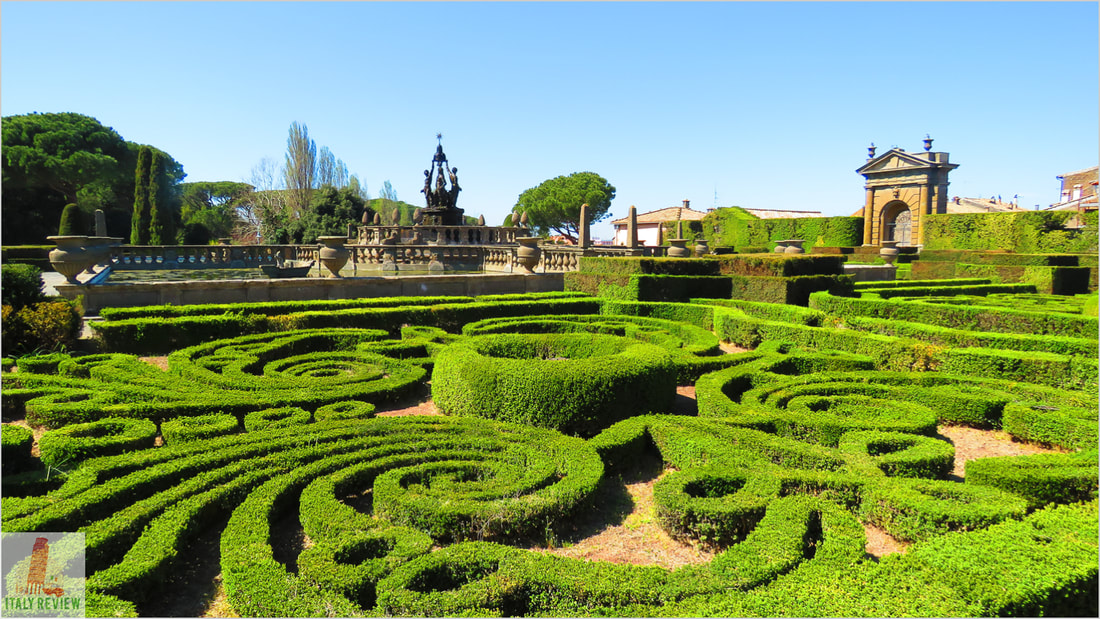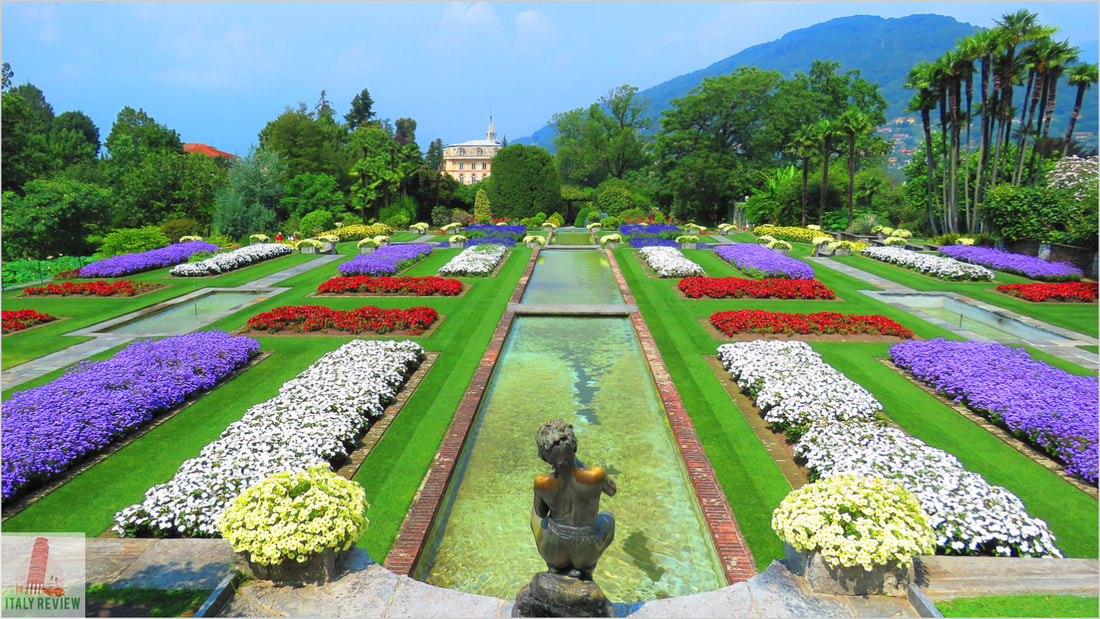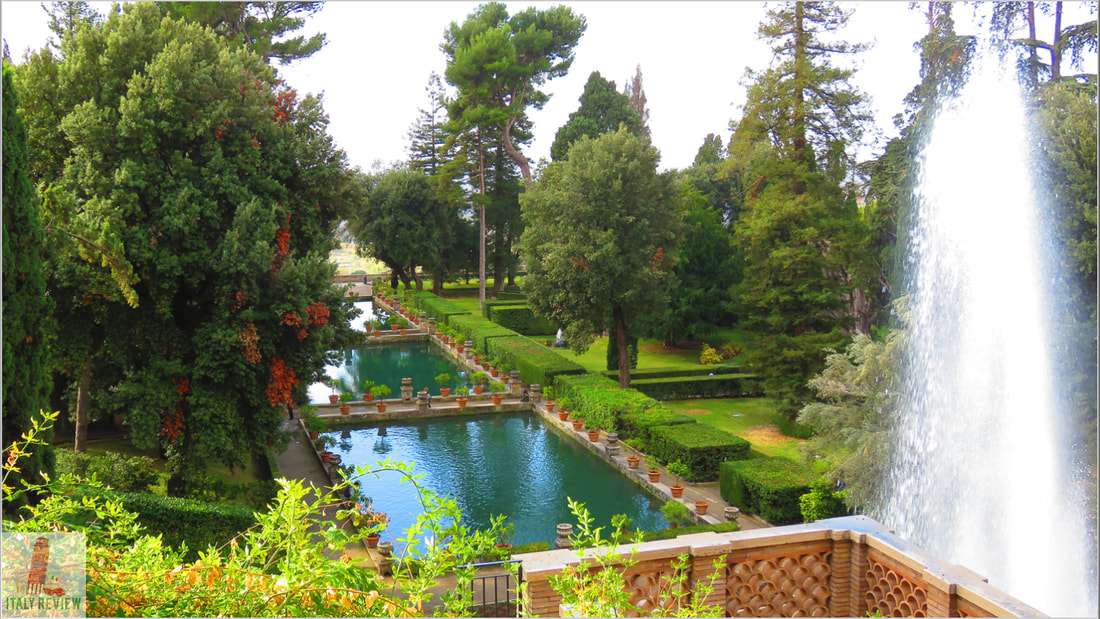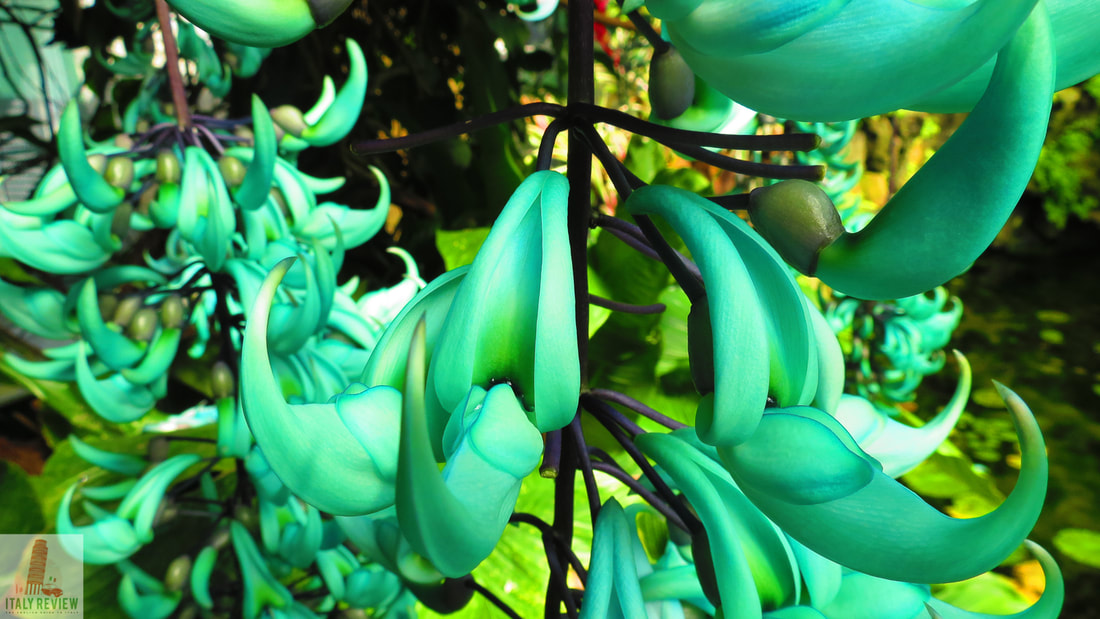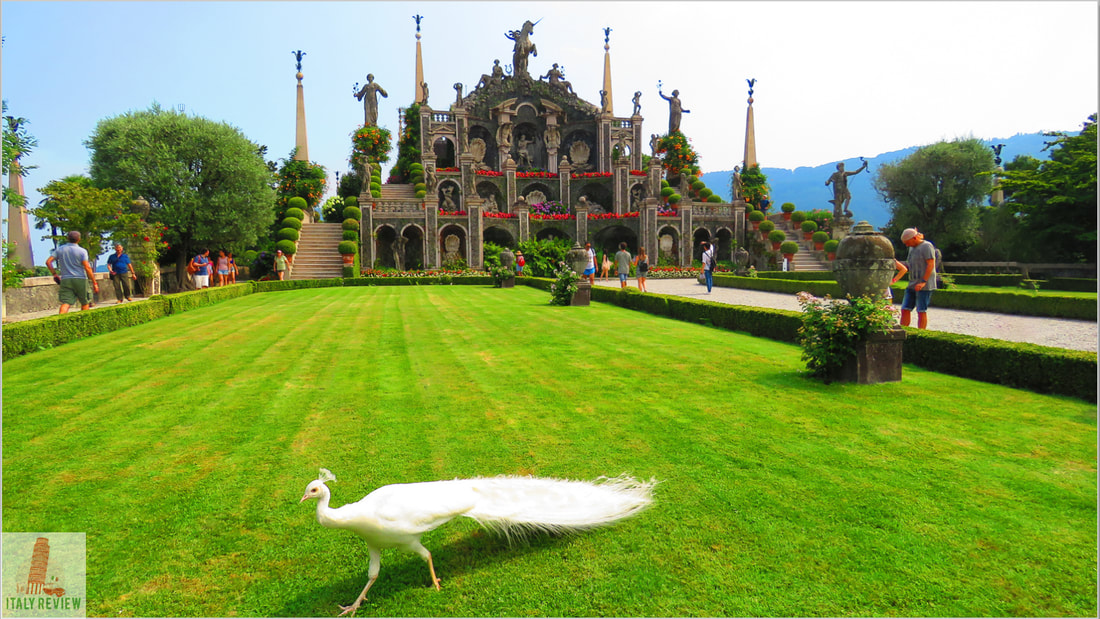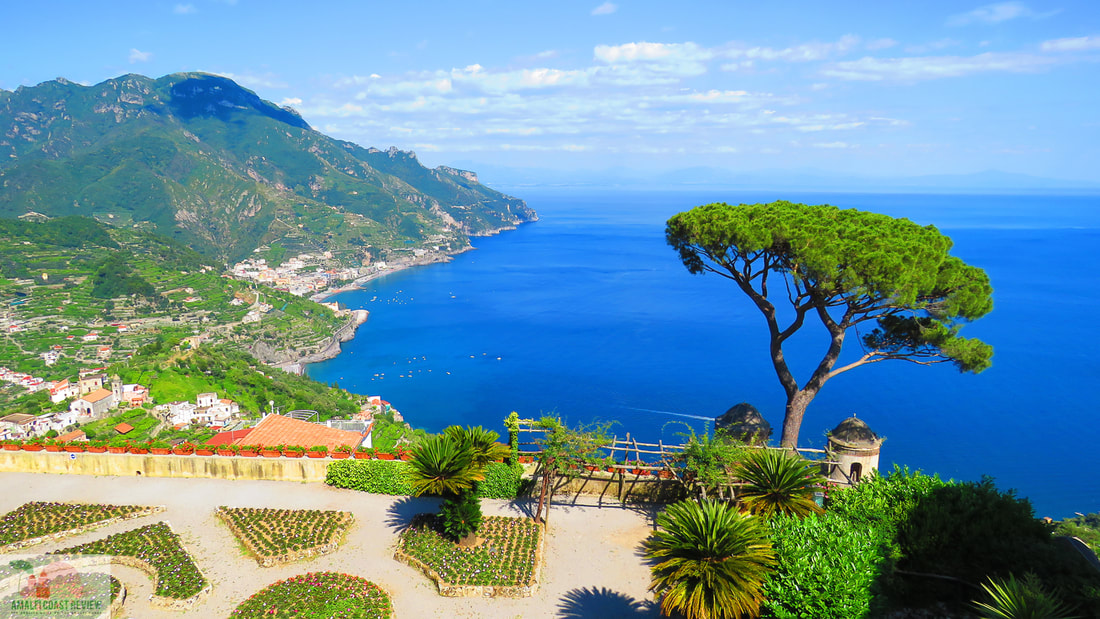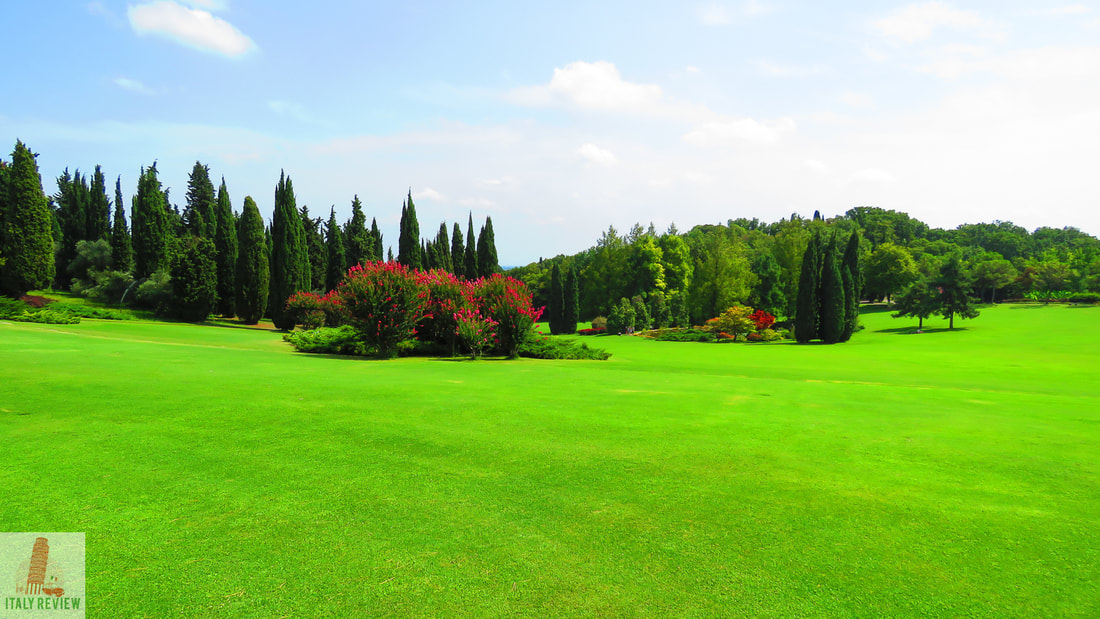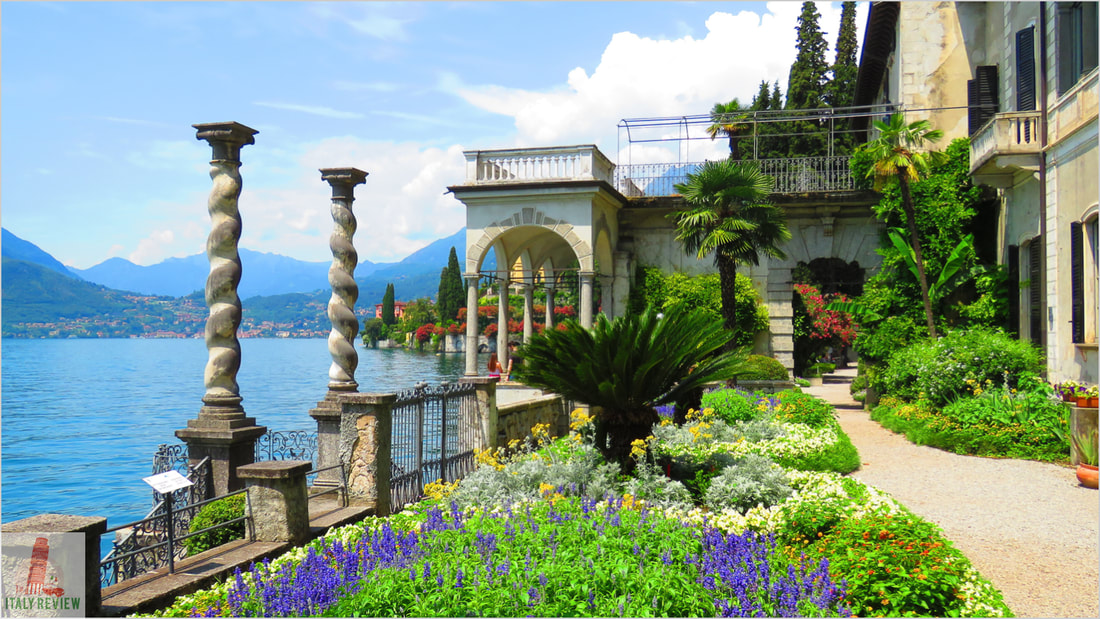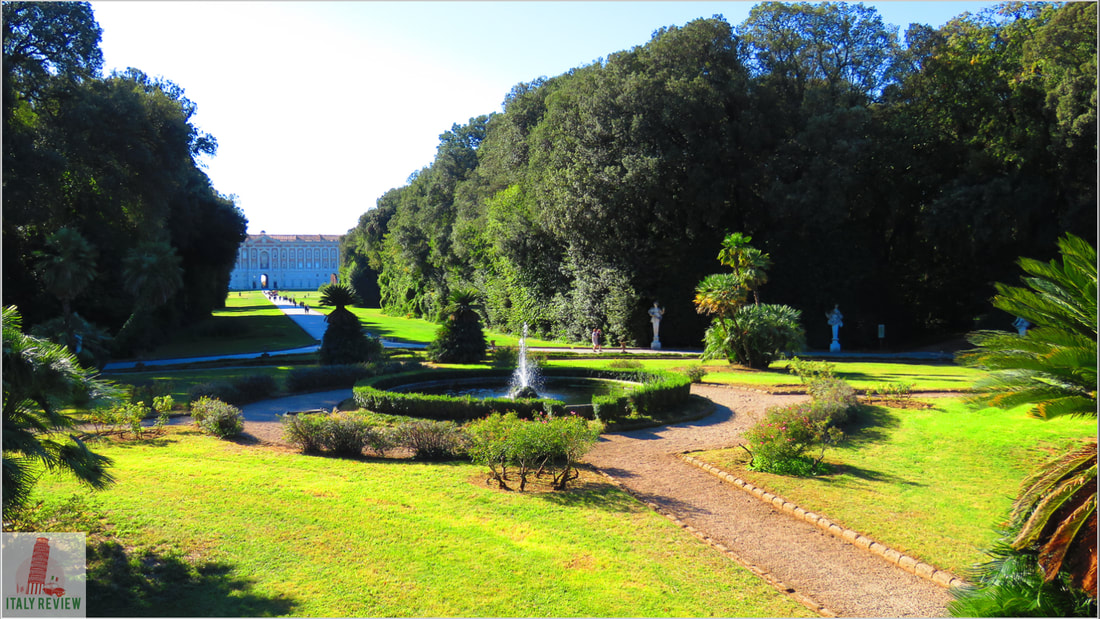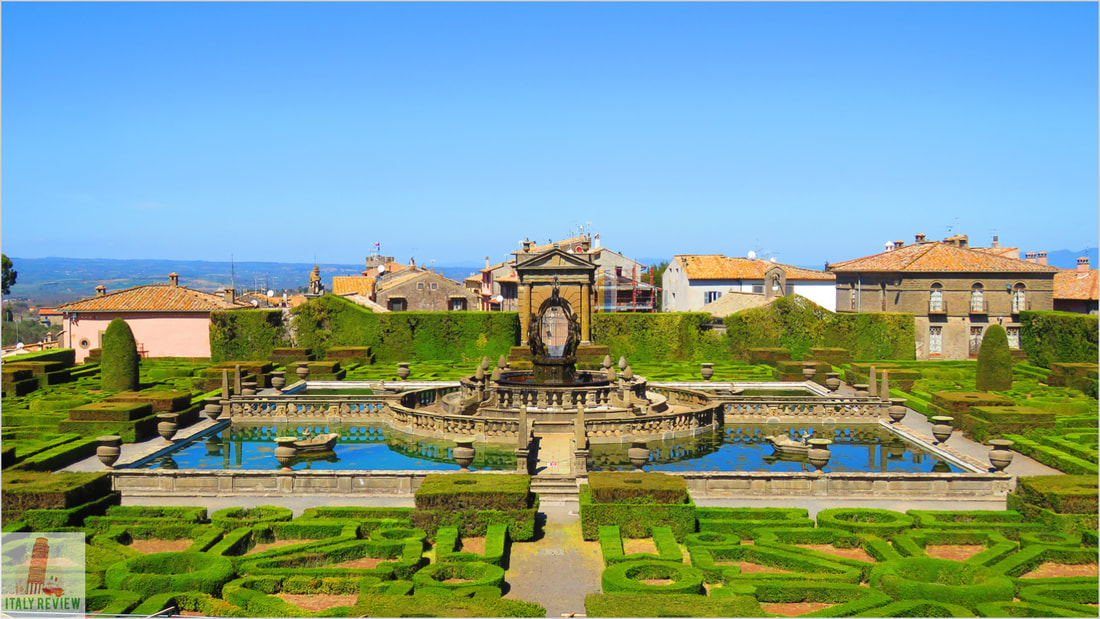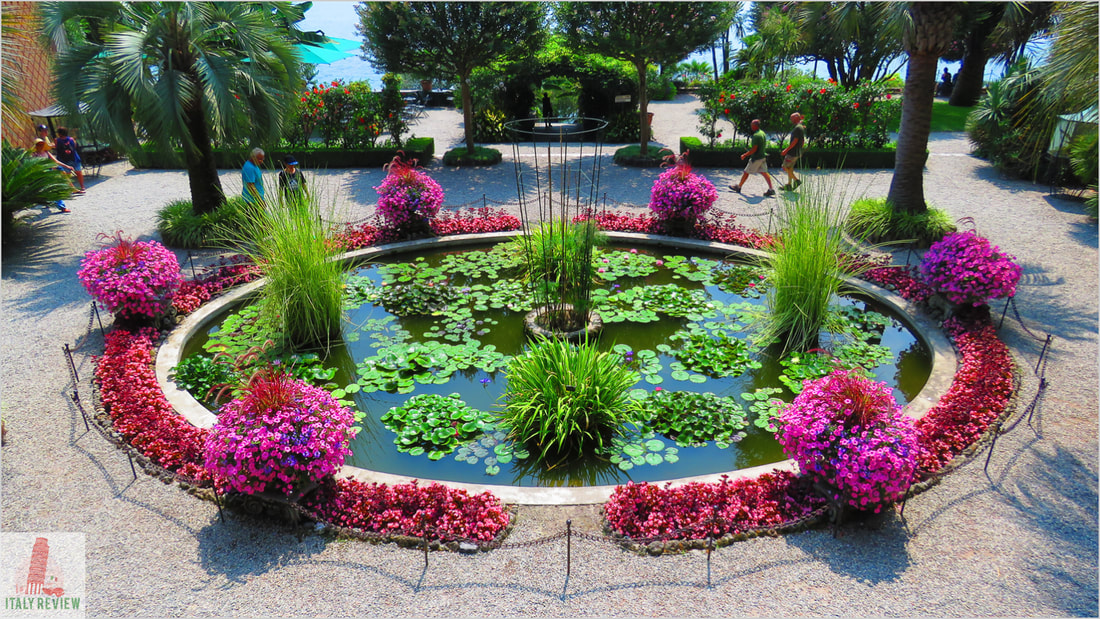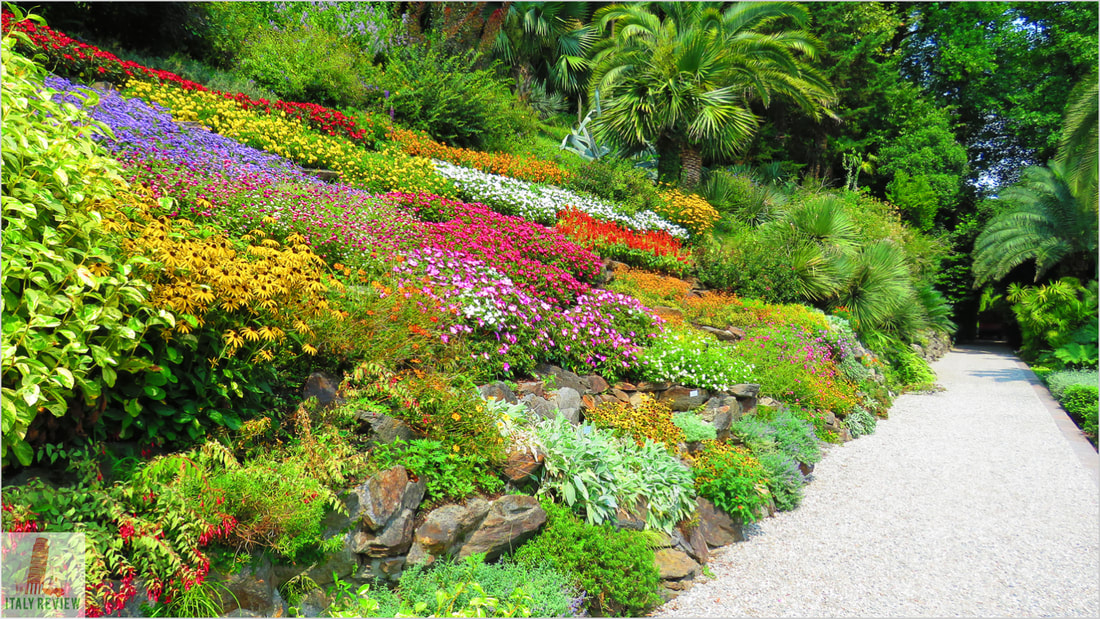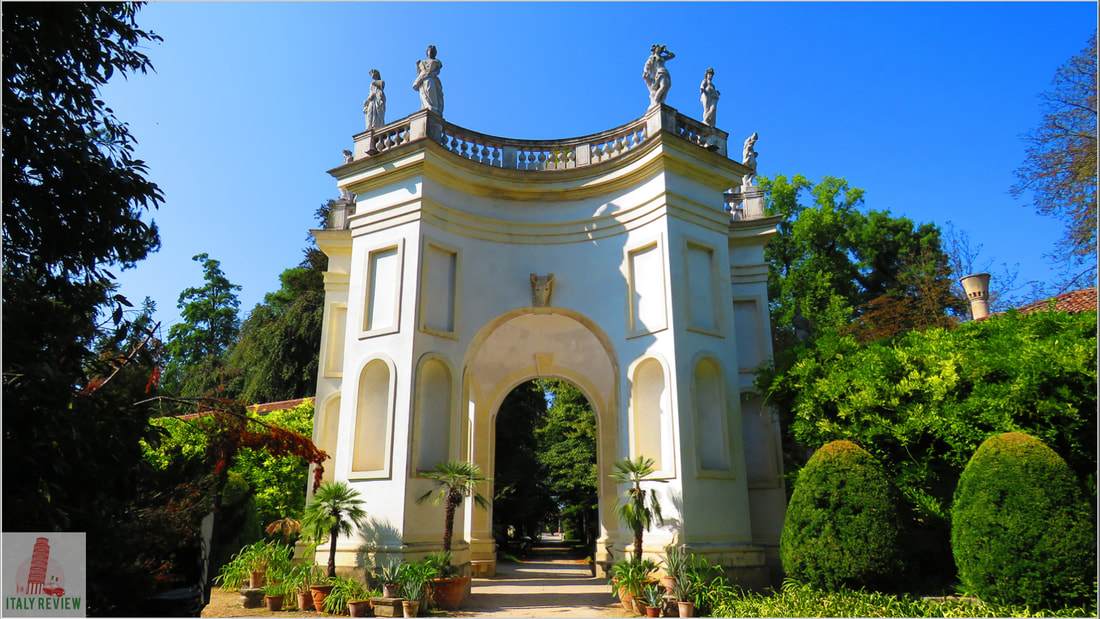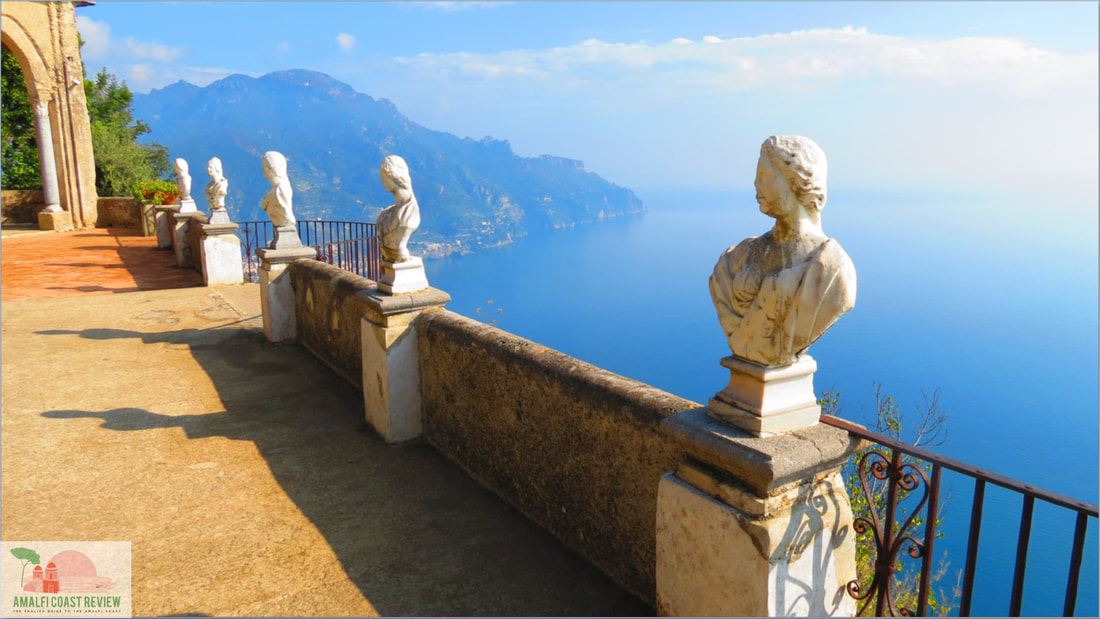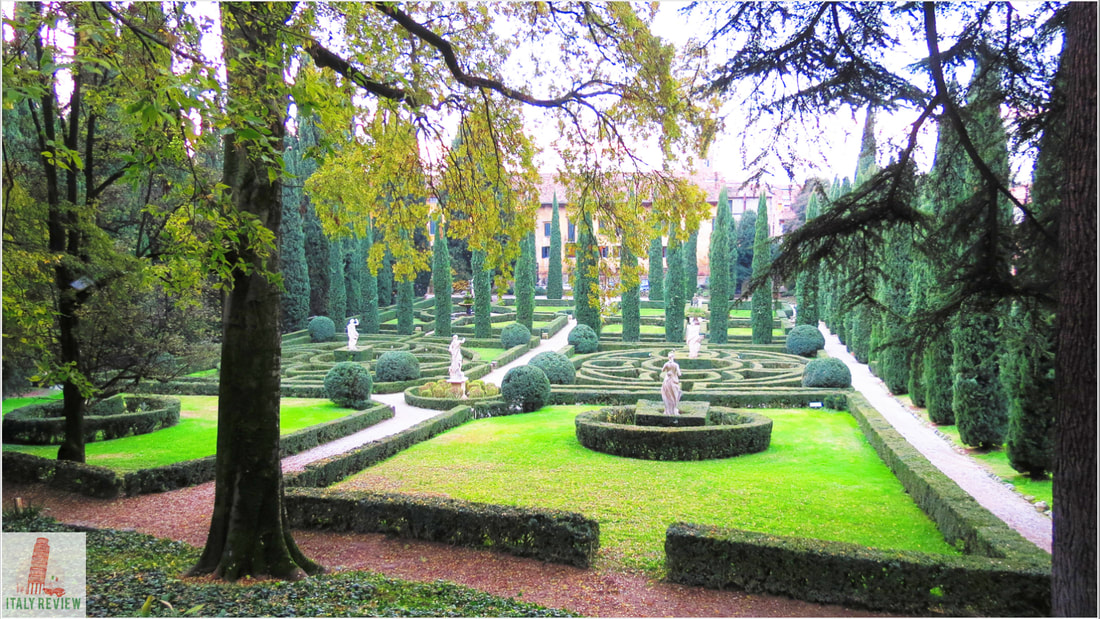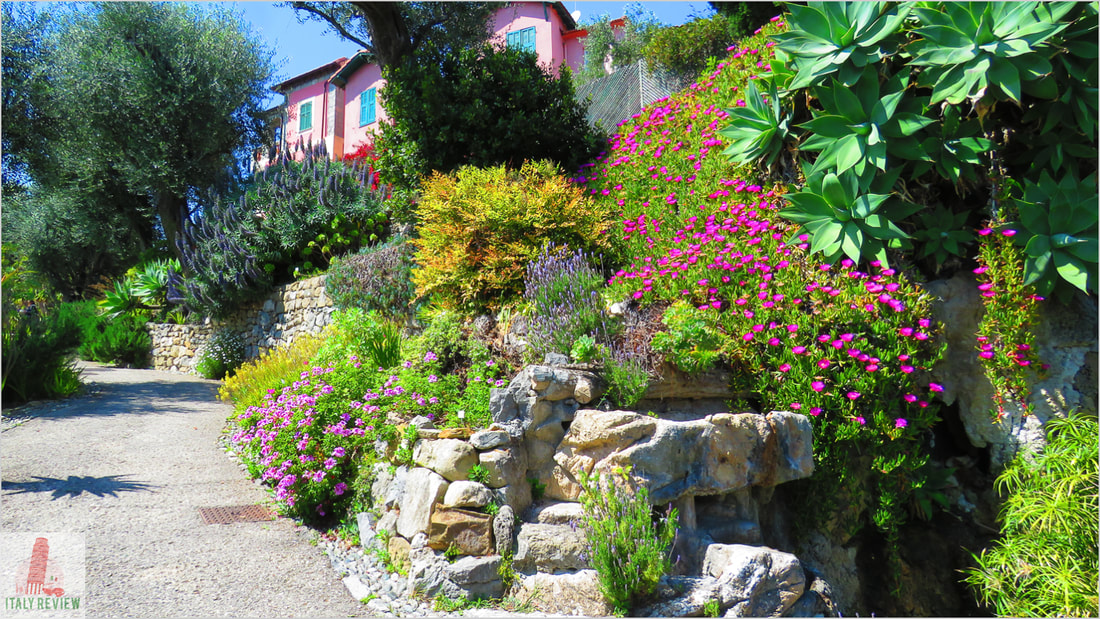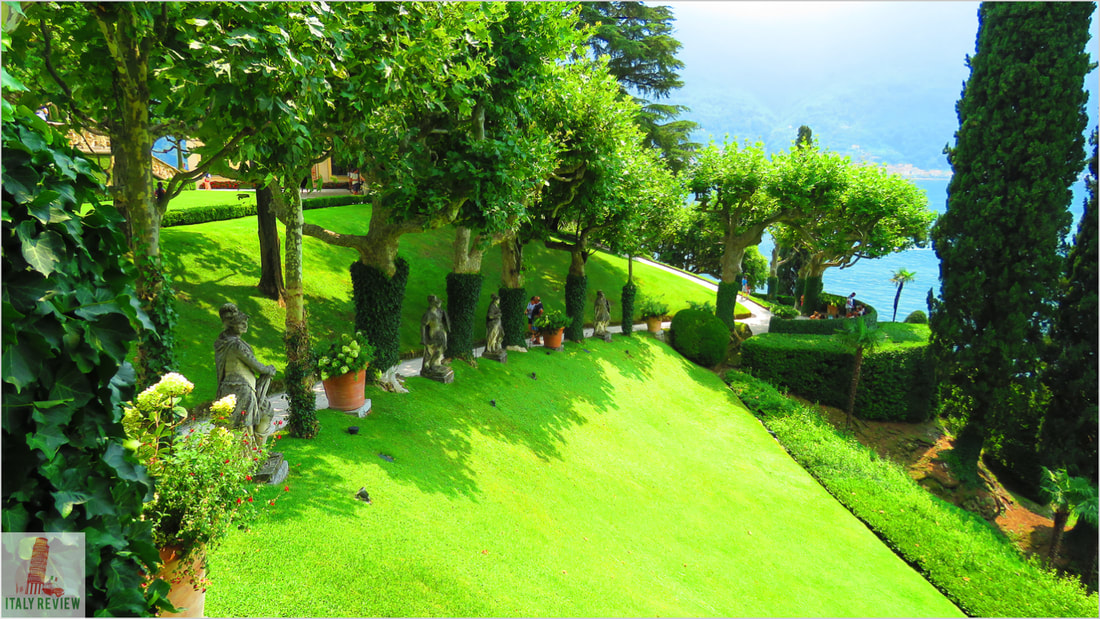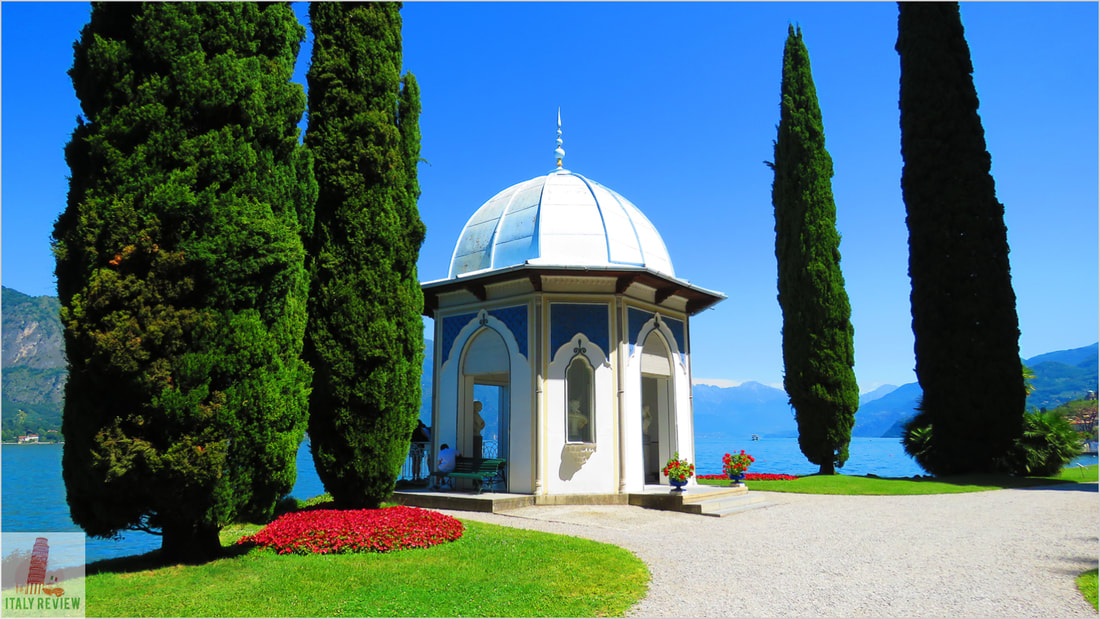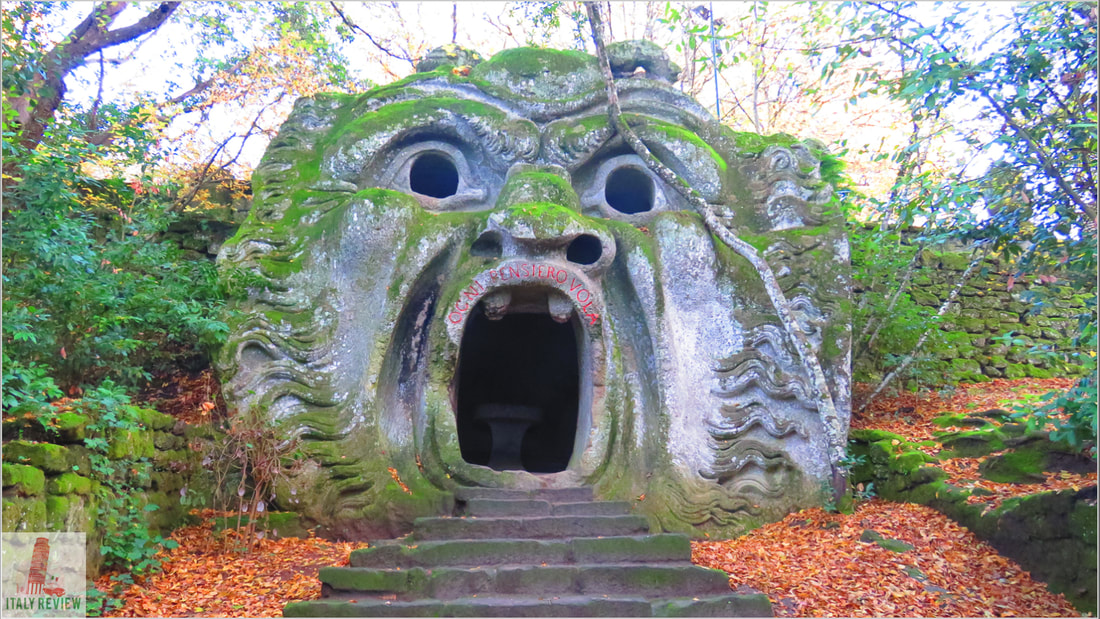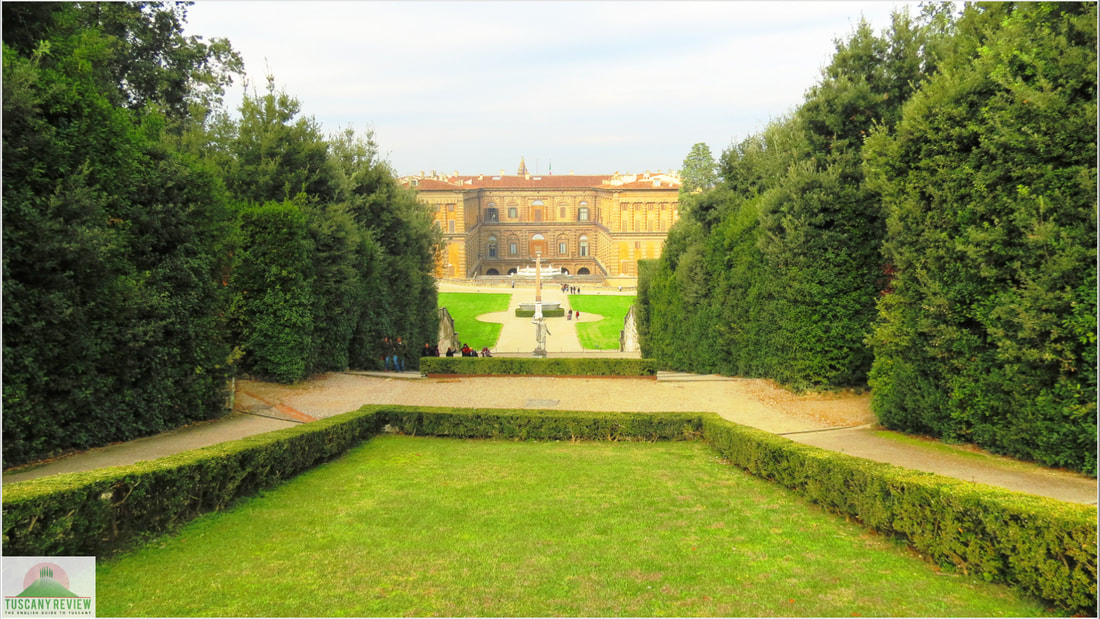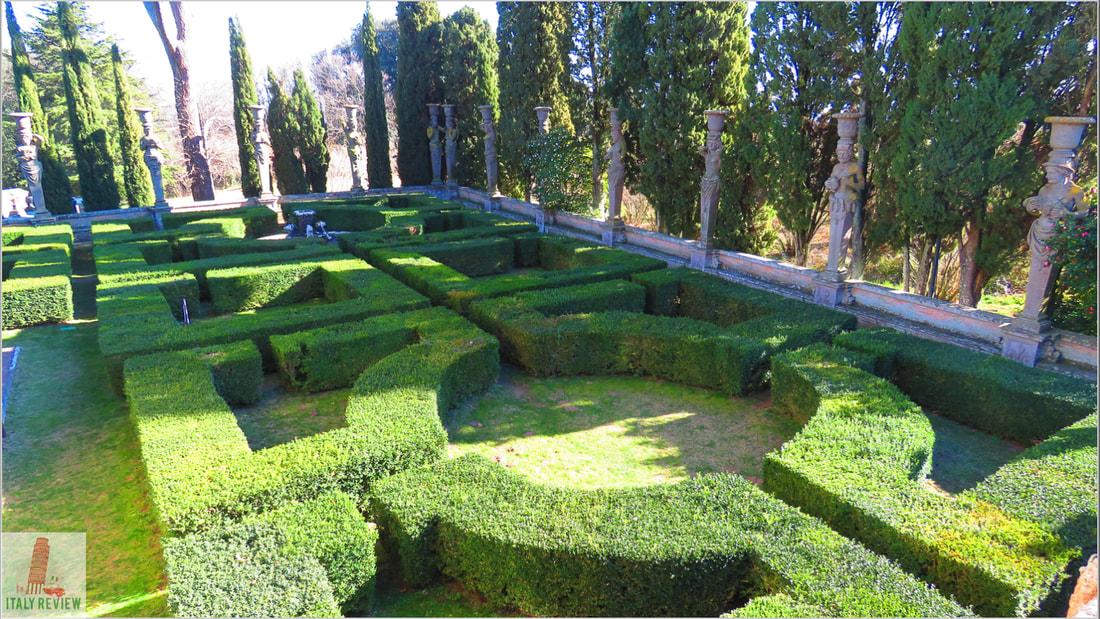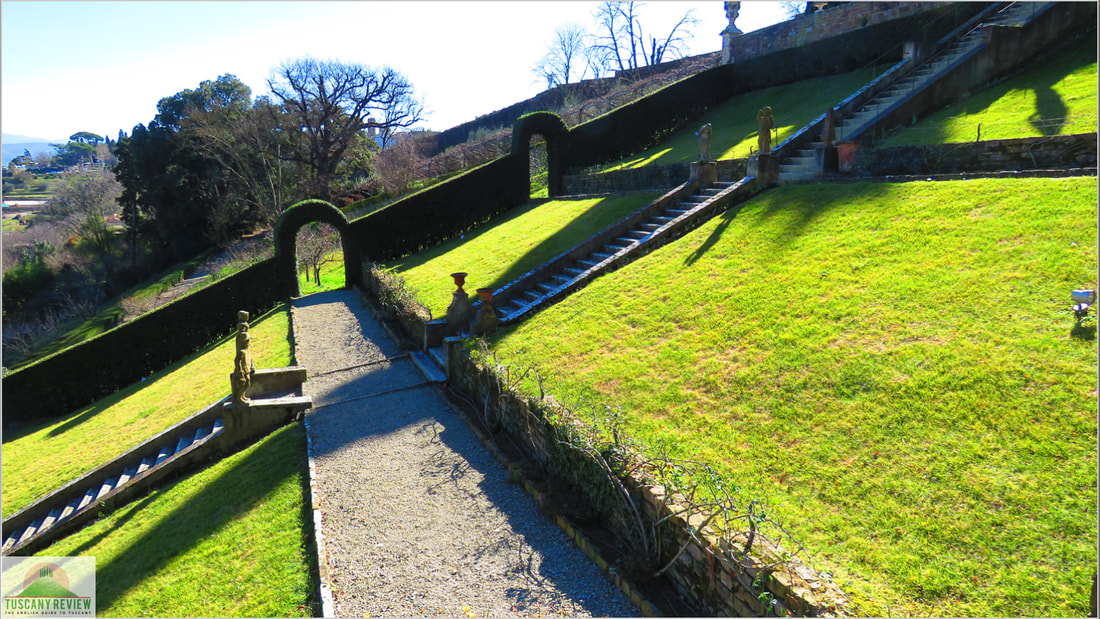Gardens of Italy
|
By Dion Protani
|
Latest update: 18 January 2024
|
|
Choosing the best Gardens of Italy was in some ways a difficult task; how can you say which of these beautiful creations is better than another?
But whatever little hardship there may have been in the selection process was completely blown away by the enjoyment of visiting each and every one of these wonderful environments. Gardens evolve over time and it's possible to see different aspects of them each time you visit. Of course they also change depending on the season and it is this constantly changing nature of gardens that makes them so attractive. |
Related links
The point I'm trying to reach in a very roundabout way, is that this list, just like the gardens themselves, will continue to evolve and is in no way a closed shop. I've done my best to visit the most famous gardens in Italy but of course there are exceptions and I will continue to visit and revisit them all in order to provide the most comprehensive collection possible.
So, without further preamble, the two gardens occupying first and second position in my list are Villa Taranto and Villa d'Este. The first of those, Villa Taranto is situated on the shores of Lake Maggiore, next to the lakeside city of Verbania. It's not just the rich variety of flowers on display in the garden that sets it apart, but its centrepiece lawn area with a central water feature and the most incredible array of colours. Everything in the garden is perfectly manicured and a glowing testament to the work of its creator, the Scotsman Neil Boyd McEacharn who established the garden in the 1930's.
I've placed the Villa d'Este in second place on my list although the people at UNESCO would probably disagree with me as they've listed it as one of their World Heritage Sites since 2001. It won its coveted place in the list due to its innovative design and use of ornamental features such as fountains and statues. It's held up as an exemplar of the 16th century Italian garden and of the Renaissance culture.
So, without further preamble, the two gardens occupying first and second position in my list are Villa Taranto and Villa d'Este. The first of those, Villa Taranto is situated on the shores of Lake Maggiore, next to the lakeside city of Verbania. It's not just the rich variety of flowers on display in the garden that sets it apart, but its centrepiece lawn area with a central water feature and the most incredible array of colours. Everything in the garden is perfectly manicured and a glowing testament to the work of its creator, the Scotsman Neil Boyd McEacharn who established the garden in the 1930's.
I've placed the Villa d'Este in second place on my list although the people at UNESCO would probably disagree with me as they've listed it as one of their World Heritage Sites since 2001. It won its coveted place in the list due to its innovative design and use of ornamental features such as fountains and statues. It's held up as an exemplar of the 16th century Italian garden and of the Renaissance culture.
The next four gardens on my list show some of the very finest work from both ends of the country. The garden of La Mortella on the beautiful island of Ischia in the Gulf of Naples takes up third position; it was created by the English composer Sir William Walton and his Argentinian wife, the Lady Susana Walton. The garden is set on various levels which allows the growth of enormous trees alongside delicate, tiny botanical specimens. Moreover, the link with the world of music is strong as within the garden complex there's an amphitheatre where you can enjoy classical music concerts and operatic performances on magical, balmy summer evenings.
The garden of Isola Bella in the Piedmont region (not to be confused with the Isola Bella beach in Sicily), is situated just a short distance from the number one garden on this list: Villa Taranto. One of the three Borromean Islands in the middle of Lake Maggiore, the tiny Isola Bella is home to the 17th century Palazzo Borromeo and its sumptuous garden. There are few more evocative locations than this in Italy; the garden's family of white peacocks happily roam the beautiful lawns while some remarkable sculptures and structures provide a variety of places from which to enjoy the panoramas of the garden and the graceful lake as its backdrop.
Back in the south of Italy in the region of Campania, Villa Rufolo is a garden that you may well have seen photos of without realising where it was. One of two gardens in the beautiful hill town of Ravello, Villa Rufolo can lay claim to one of the most photographed trees in Italy as it's the view that almost every visitor to the garden wants to capture. The pine tree stands in the foreground in front of the twin domes of a small church behind it while the glorious vista of the Amalfi Coast stretches out in the background.
Returning to the north of Italy and this time to the Veneto region we arrive at the wonderful Parco Giardino Sigurtà. Situated around ten kilometres of the town of Peschiera del Garda at the southern tip of Lake Garda, Parco Giardino Sigurtà is one of the most glorious expanses of parkland in Italy. Of all the gardens I've visited in the country, this one was the most fun; the garden is too big to be able to see everything on foot so when you arrive at the entrance you're provided with a choice of vehicles with which you can make your way round, including golf buggies and bicycles. I chose an electric bike which was perfect for the undulating, open spaces of the garden. One of the highlights here is a wonderful maze that you may be stuck in for a while if you lose your bearings!
The garden of Isola Bella in the Piedmont region (not to be confused with the Isola Bella beach in Sicily), is situated just a short distance from the number one garden on this list: Villa Taranto. One of the three Borromean Islands in the middle of Lake Maggiore, the tiny Isola Bella is home to the 17th century Palazzo Borromeo and its sumptuous garden. There are few more evocative locations than this in Italy; the garden's family of white peacocks happily roam the beautiful lawns while some remarkable sculptures and structures provide a variety of places from which to enjoy the panoramas of the garden and the graceful lake as its backdrop.
Back in the south of Italy in the region of Campania, Villa Rufolo is a garden that you may well have seen photos of without realising where it was. One of two gardens in the beautiful hill town of Ravello, Villa Rufolo can lay claim to one of the most photographed trees in Italy as it's the view that almost every visitor to the garden wants to capture. The pine tree stands in the foreground in front of the twin domes of a small church behind it while the glorious vista of the Amalfi Coast stretches out in the background.
Returning to the north of Italy and this time to the Veneto region we arrive at the wonderful Parco Giardino Sigurtà. Situated around ten kilometres of the town of Peschiera del Garda at the southern tip of Lake Garda, Parco Giardino Sigurtà is one of the most glorious expanses of parkland in Italy. Of all the gardens I've visited in the country, this one was the most fun; the garden is too big to be able to see everything on foot so when you arrive at the entrance you're provided with a choice of vehicles with which you can make your way round, including golf buggies and bicycles. I chose an electric bike which was perfect for the undulating, open spaces of the garden. One of the highlights here is a wonderful maze that you may be stuck in for a while if you lose your bearings!
The great lakes of the country have been a constant well from which I've drunk in my search for the best gardens of Italy. Although I'm just about to mention the first, there are four gardens on Lake Como alone on this list, not to mention the three on Lake Maggiore. The first of the Lake Como gardens is the beautiful Villa Monastero, just to the south of the wonderful town of Varenna which is currently occupying first place on my list of Lakeside Towns of Italy. Some parts of the villa date back to the 12th century and the complex nowadays includes a museum, an events facility and the wonderful botanical garden which holds an imperious position next to the lake.
Aside from the lakes, there are certain regions of Italy that feature heavily on this list; two of the top five are in the southern region of Campania and we now come to a third: the Royal Palace of Caserta. The one time residence of the Bourbon royal family was built in the 18th century and the cavernous, regal apartments of the main building are worthy of a visit in their own right. However, what sets the Royal Palace of Caserta apart is its incredible garden. To walk from the palace itself to the end of its garden takes around half an hour and covers a distance of three kilometres. Along the way you'll pass perfectly-manicured lawns adorned with statues and interrupted at various points by some dazzling water features. The coup de grace is the fountain structure at the top of the garden which then gives way to a more natural garden area next to it called the Giardino Inglese.
Another region which has proved fertile ground for beautiful Italian Gardens is Lazio, the region of which Rome is the capital. There are three entries from Lazio on this list and the first of those is the beautiful Villa Lante in the small town of Bagnaia, close to Viterbo. The garden, created in the Mannerist style, was used as backdrop for a number of scenes in the Netflix TV series about the Medici and shares that distinction with the nearby city of Viterbo whose Palazzo dei Papi masqueraded as Rome in the show.
Completing the collection of three gardens around Lake Maggiore on this list: Villa Madre is another of the three Borromean Islands in the middle of the lake and lies just a short distance from the aforementioned Isola Bella. In a similar way to its near neighbour, the island of Isola Madre is dominated by its own Palazzo Borromeo whose botanical garden can boast its own peacocks.
Aside from the lakes, there are certain regions of Italy that feature heavily on this list; two of the top five are in the southern region of Campania and we now come to a third: the Royal Palace of Caserta. The one time residence of the Bourbon royal family was built in the 18th century and the cavernous, regal apartments of the main building are worthy of a visit in their own right. However, what sets the Royal Palace of Caserta apart is its incredible garden. To walk from the palace itself to the end of its garden takes around half an hour and covers a distance of three kilometres. Along the way you'll pass perfectly-manicured lawns adorned with statues and interrupted at various points by some dazzling water features. The coup de grace is the fountain structure at the top of the garden which then gives way to a more natural garden area next to it called the Giardino Inglese.
Another region which has proved fertile ground for beautiful Italian Gardens is Lazio, the region of which Rome is the capital. There are three entries from Lazio on this list and the first of those is the beautiful Villa Lante in the small town of Bagnaia, close to Viterbo. The garden, created in the Mannerist style, was used as backdrop for a number of scenes in the Netflix TV series about the Medici and shares that distinction with the nearby city of Viterbo whose Palazzo dei Papi masqueraded as Rome in the show.
Completing the collection of three gardens around Lake Maggiore on this list: Villa Madre is another of the three Borromean Islands in the middle of the lake and lies just a short distance from the aforementioned Isola Bella. In a similar way to its near neighbour, the island of Isola Madre is dominated by its own Palazzo Borromeo whose botanical garden can boast its own peacocks.
For our next two gardens on the list we remain in the north of Italy and find another entry that's next to a lake. Villa Carlotta is situated on the western shores of Lake Como, close to the lakeside town of Tremezzo. The garden covers around twenty acres and the 18th century villa at its centre is now a museum housing a variety of works including sculptures by the legendary Italian sculptor Antonio Canova.
We stay in the north for our next garden on the list and head back to the region of Veneto of which Venice is the capital. Around thirty kilometres inland of Venice we find the gardens of Villa Pisani. The beautiful Baroque villa is one of several that lies along the Naviglio del Brenta, the canal that links Venice to the historic city of Padova, a short distance west of Villa Pisani. This is another garden with some wonderful statues and ornamental structures as well as a maze that can take a little while to find the centre of.
Earlier in the list we encountered Villa Rufolo in Ravello, famous for its views of the Amalfi Coast and iconic tree; well just a short walk from there we find Ravello's second garden on this list, the wonderful Villa Cimbrone. Just as Villa Rufolo can claim to have its iconic status, Villa Cimbrone can possibly outdo it with its Terrace of Infinity. A series of busts line the terrace area from which you can get a different set of panoramas down on to the Amalfi Coast and somewhat more dizzying as well with the vertiginous drop from its balcony.
Most of the garden listed above are in rural locations or around lakes but the next one is in the historic city of Verona. Giardino Giusti is a Renaissance garden created in 1580 whose fame grew when it became an integral stop-off on the Grand Tour in the 17th and 18th centuries. The garden's huge trees and landscaped areas mark it out as a haven of peace just a stone's throw from the bustling city centre.
We stay in the north for our next garden on the list and head back to the region of Veneto of which Venice is the capital. Around thirty kilometres inland of Venice we find the gardens of Villa Pisani. The beautiful Baroque villa is one of several that lies along the Naviglio del Brenta, the canal that links Venice to the historic city of Padova, a short distance west of Villa Pisani. This is another garden with some wonderful statues and ornamental structures as well as a maze that can take a little while to find the centre of.
Earlier in the list we encountered Villa Rufolo in Ravello, famous for its views of the Amalfi Coast and iconic tree; well just a short walk from there we find Ravello's second garden on this list, the wonderful Villa Cimbrone. Just as Villa Rufolo can claim to have its iconic status, Villa Cimbrone can possibly outdo it with its Terrace of Infinity. A series of busts line the terrace area from which you can get a different set of panoramas down on to the Amalfi Coast and somewhat more dizzying as well with the vertiginous drop from its balcony.
Most of the garden listed above are in rural locations or around lakes but the next one is in the historic city of Verona. Giardino Giusti is a Renaissance garden created in 1580 whose fame grew when it became an integral stop-off on the Grand Tour in the 17th and 18th centuries. The garden's huge trees and landscaped areas mark it out as a haven of peace just a stone's throw from the bustling city centre.
You might be surprised to find a place called Hanbury Botanical Gardens in Italy; this is another entrant with strong British connections as it was devised by Sir Thomas Hanbury in the 19th century. It's situated in the mainly coastal region of Liguria in north-western Italy and, depending on which direction you're heading in, one of the first or last places you'll see in Italy if travelling via France as it's right on the international border between the two countries; slightly closer to the French town of Menton than it is to Ventimiglia, the Italian border town.
We return to Lake Como for the next two gardens. Villa del Balbianello shot to fame in recent years as it was used as one of the filming locations for the 2002 Star Wars Attack of the Clones movie, and not content with that, followed it up four years later by starring in the Casino Royale James Bond film. Links with Hollywood are strong in this part of the world with George Clooney's villa just a few kilometres south of the garden.
Over on the eastern shore of Lake Como is the beautiful town of Bellagio, one of the quintessential lakeside towns of Italy which is home to the lovely Giardini di Villa Melzi. The garden was designed in the early 19th century and is one of the favourite places to visit for visitors to Bellagio and the whole lake area.
Possibly the most unusual garden on this list is another entry from the Lazio region. The small town of Bomarzo is interesting in its own right but its fame has been dwarfed by that of its garden called the Mostri Park. Translated into English that's the "Park of Monsters" which you wouldn't normally think would be the best way to attract people to a garden. However, you can rest assured that the monsters are not real, but some of the most fantastic and imaginative stone sculptures you would ever wish to see.
We return to Lake Como for the next two gardens. Villa del Balbianello shot to fame in recent years as it was used as one of the filming locations for the 2002 Star Wars Attack of the Clones movie, and not content with that, followed it up four years later by starring in the Casino Royale James Bond film. Links with Hollywood are strong in this part of the world with George Clooney's villa just a few kilometres south of the garden.
Over on the eastern shore of Lake Como is the beautiful town of Bellagio, one of the quintessential lakeside towns of Italy which is home to the lovely Giardini di Villa Melzi. The garden was designed in the early 19th century and is one of the favourite places to visit for visitors to Bellagio and the whole lake area.
Possibly the most unusual garden on this list is another entry from the Lazio region. The small town of Bomarzo is interesting in its own right but its fame has been dwarfed by that of its garden called the Mostri Park. Translated into English that's the "Park of Monsters" which you wouldn't normally think would be the best way to attract people to a garden. However, you can rest assured that the monsters are not real, but some of the most fantastic and imaginative stone sculptures you would ever wish to see.
The beautiful southern Italian island of Capri provides the first of our final quartet of gardens. The Giardini di Augusto or Augustus Gardens are named after the first Roman emperor on an island that was once the de facto capital of Italy during the controversial reign fo the second emperor: Tiberius. The gardens are situated in one of the most exclusive pieces of real estate in the world, just a short walk from the glamorous are of shops in Capri's Via Camerelle. Aside from the gardens themselves, the views down to the likes of Marina Piccola or across to the island's Faraglioni sea stacks are breathtaking.
The final three gardens belong to the central regions of Italy with the city of Florence providing two of them. For some people, the very epitome of an Italian Renaissance garden comes in the form of the Boboli Gardens which sprawl away from the central Palazzo Pitti on the west bank of the River Arno. The 18th century gardens cover some 11 acres and are one of the favourite visitor attractions in the city.
Earlier in the list I mentioned Villa Lante which features in the Medici Netflix TV show and another garden that shares that distinction is that of the Villa Farnese in the small town of Caprarola in Lazio. Both the main building and the garden itself are worthy of a day-trip from Rome where most sights are packed with visitors. The wonderful Villa Farnese remains something of a relative secret and you can usually find yourself as one of very few visitors to this quite extraordinary site.
Completing the list is the second entry from Florence: the Giardino Bardini. Another Renaissance garden in the same Oltrarno ("across the Arno") area of Florence as the Boboli Gardens, Giardino Bardini's sloping lawns provide some wonderful views across the River Arno to the major sights of the city such as the Ponte Vecchio and Florence Cathedral.
The final three gardens belong to the central regions of Italy with the city of Florence providing two of them. For some people, the very epitome of an Italian Renaissance garden comes in the form of the Boboli Gardens which sprawl away from the central Palazzo Pitti on the west bank of the River Arno. The 18th century gardens cover some 11 acres and are one of the favourite visitor attractions in the city.
Earlier in the list I mentioned Villa Lante which features in the Medici Netflix TV show and another garden that shares that distinction is that of the Villa Farnese in the small town of Caprarola in Lazio. Both the main building and the garden itself are worthy of a day-trip from Rome where most sights are packed with visitors. The wonderful Villa Farnese remains something of a relative secret and you can usually find yourself as one of very few visitors to this quite extraordinary site.
Completing the list is the second entry from Florence: the Giardino Bardini. Another Renaissance garden in the same Oltrarno ("across the Arno") area of Florence as the Boboli Gardens, Giardino Bardini's sloping lawns provide some wonderful views across the River Arno to the major sights of the city such as the Ponte Vecchio and Florence Cathedral.
As I alluded to at the top of the page, I don't consider this list to be finished and not only in terms of the order by which the above gardens appear, but with the expectation that other gardens will find their way onto the list. The twenty two gardens above represent just a small percentage of the fantastic landscaped places in Italy and the search for more will continue.

